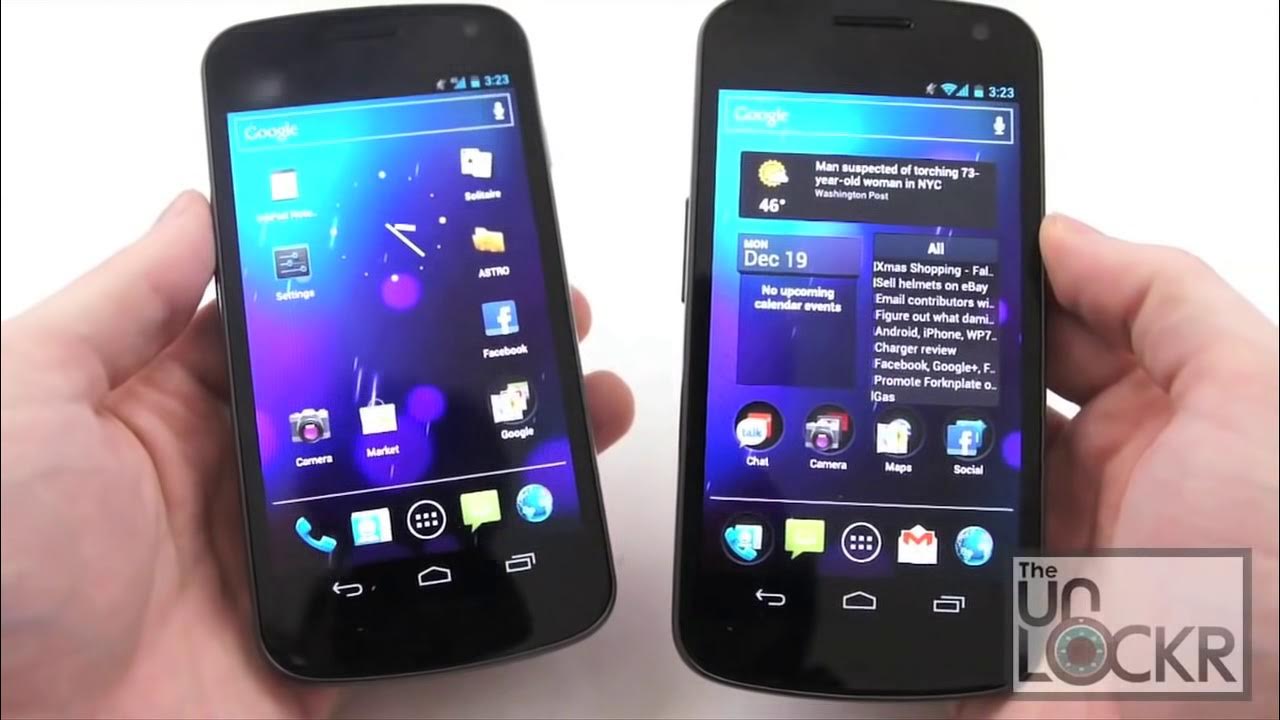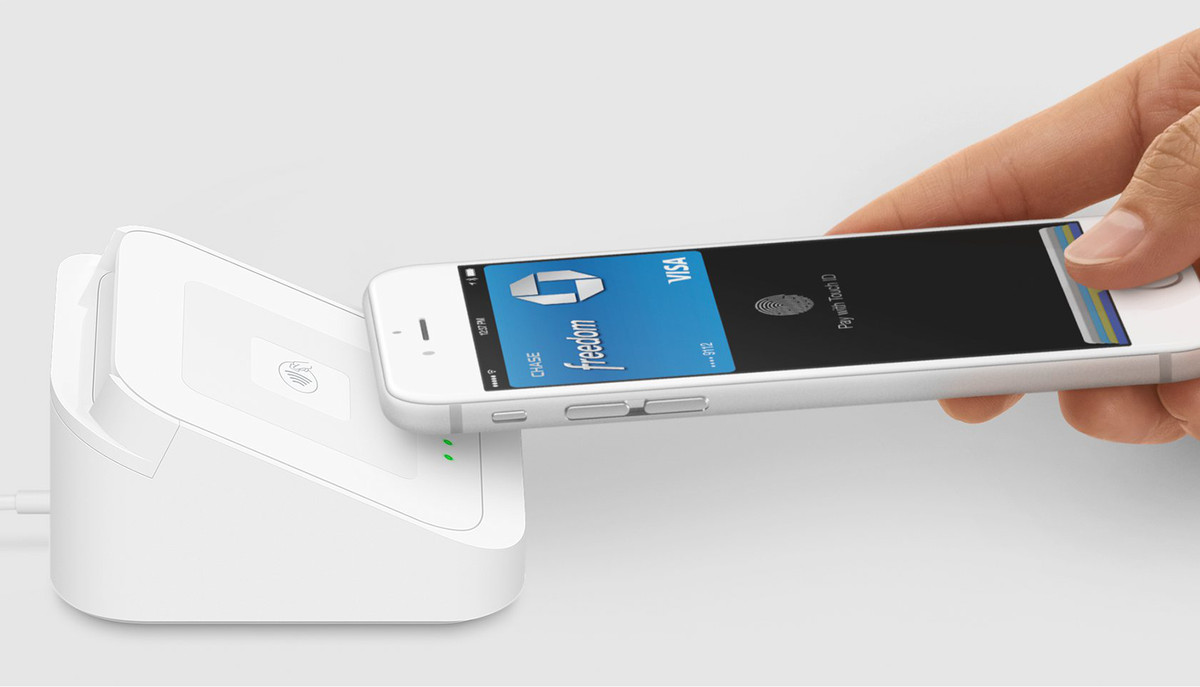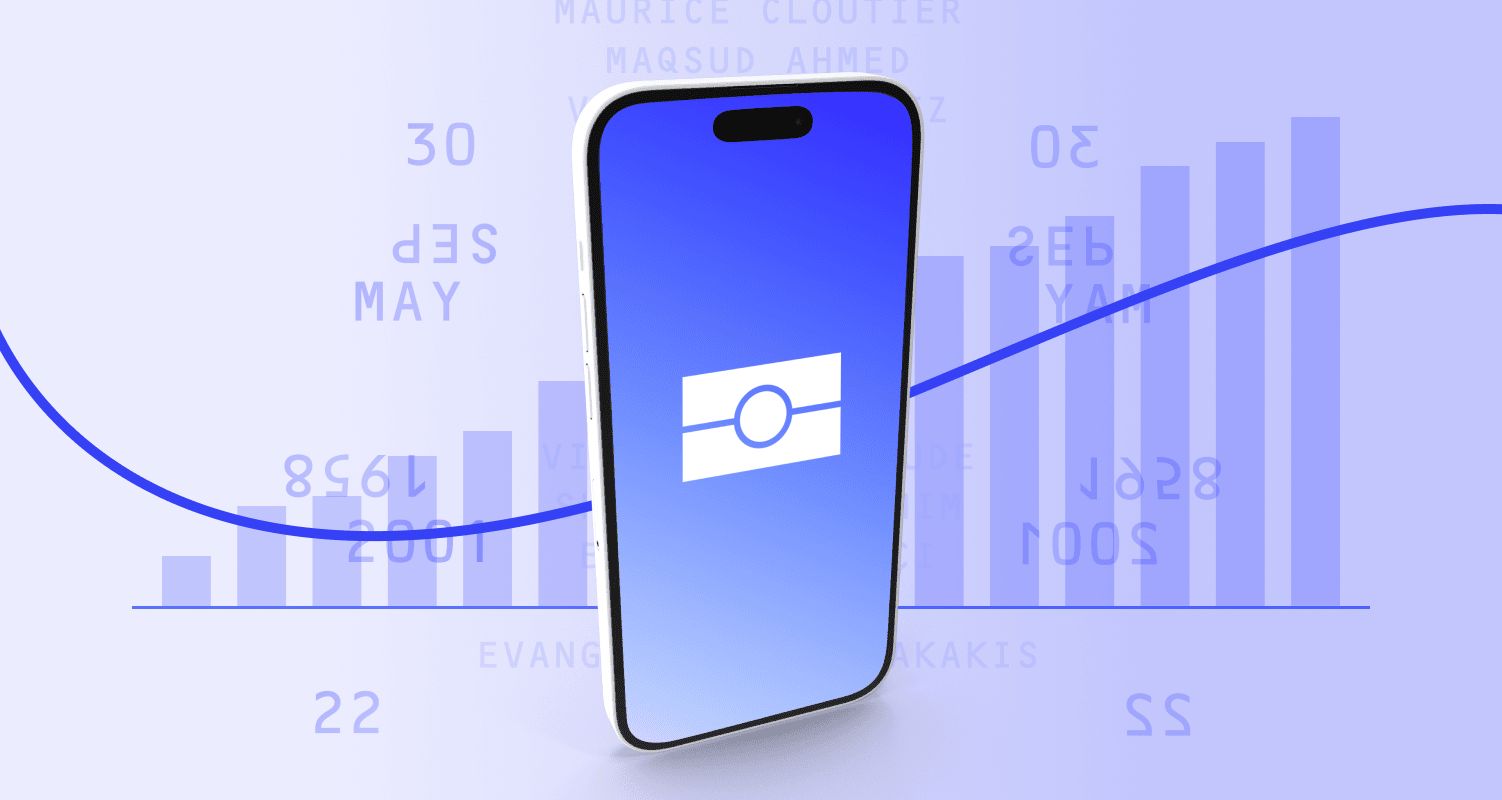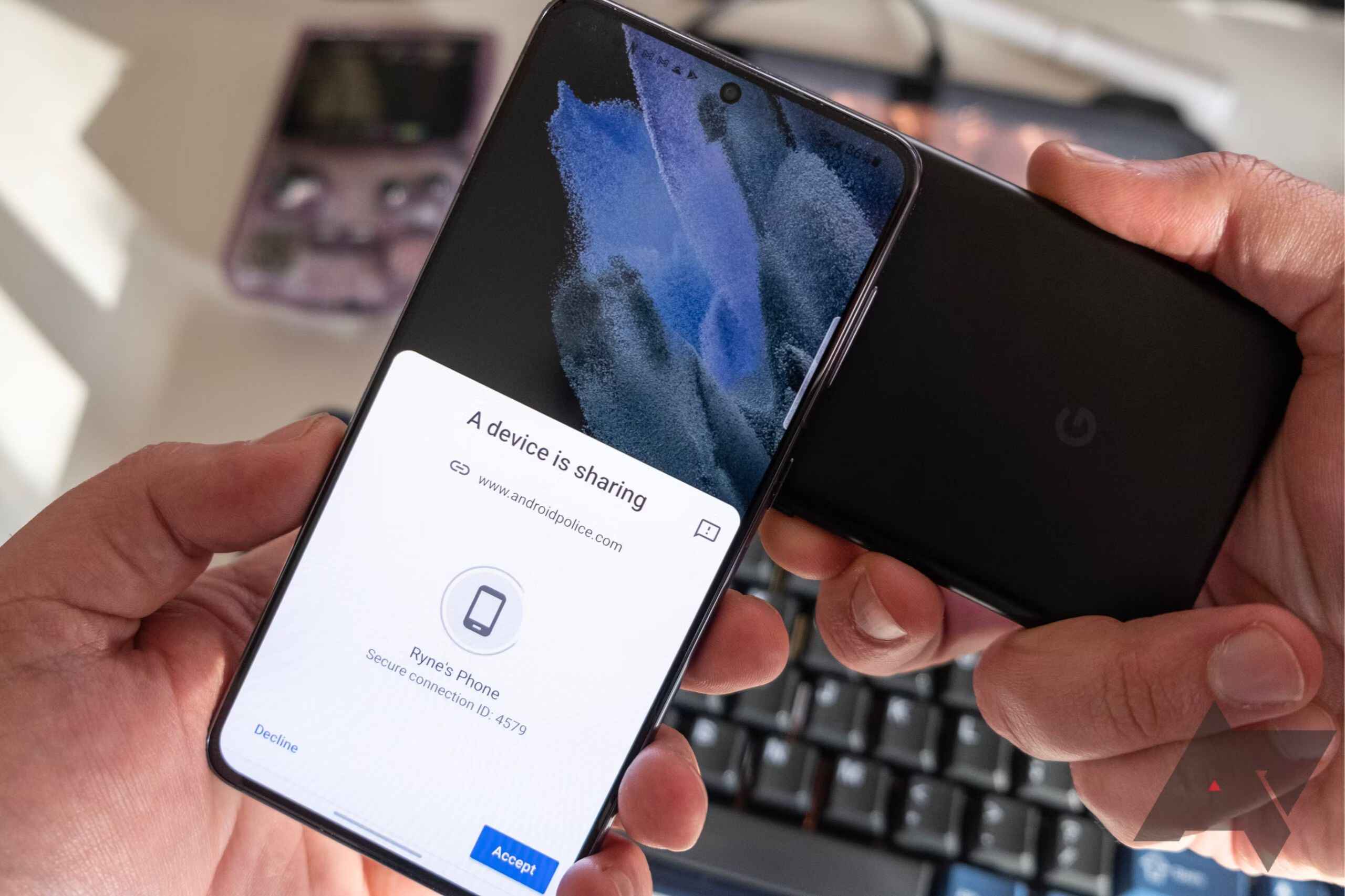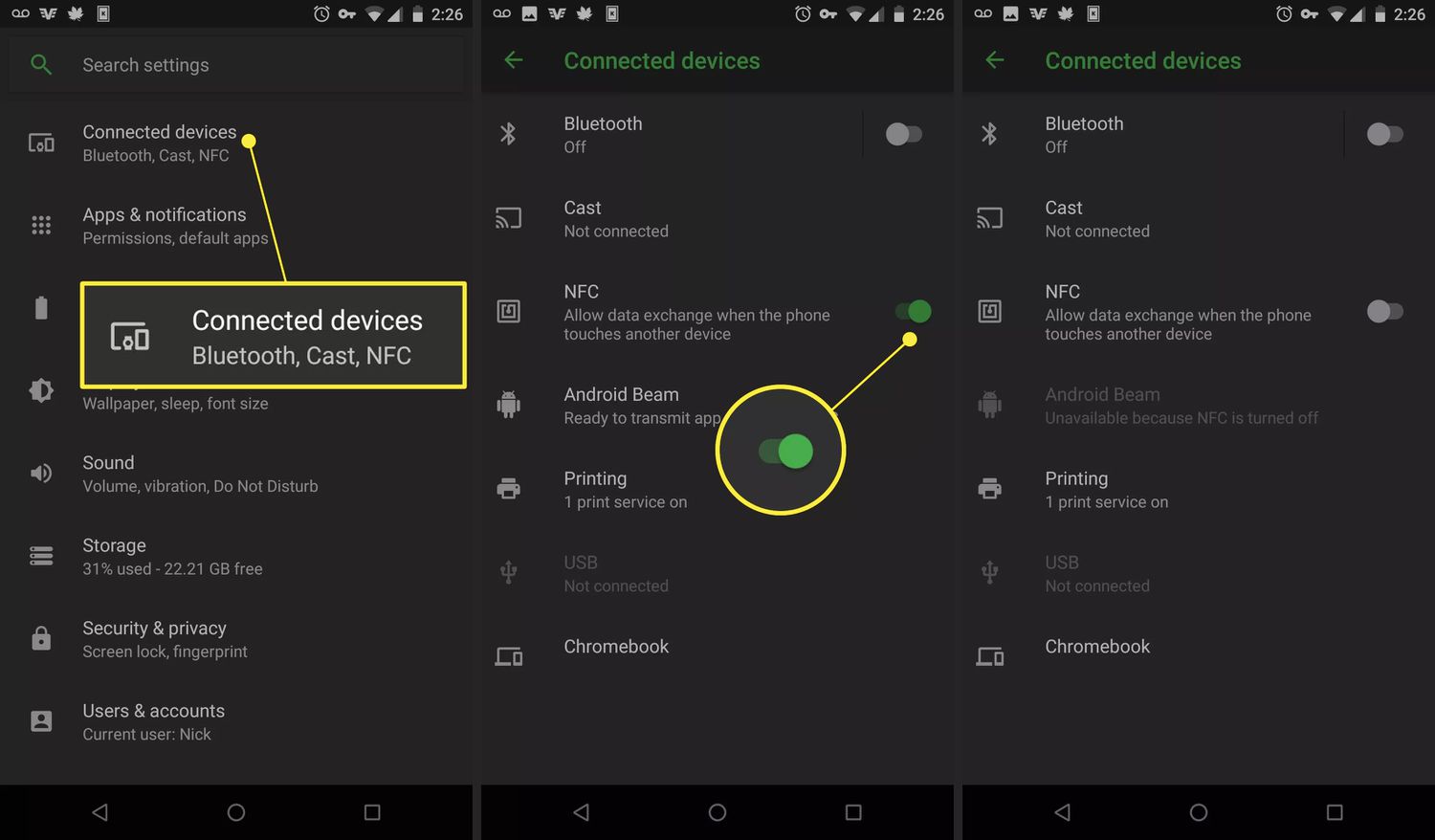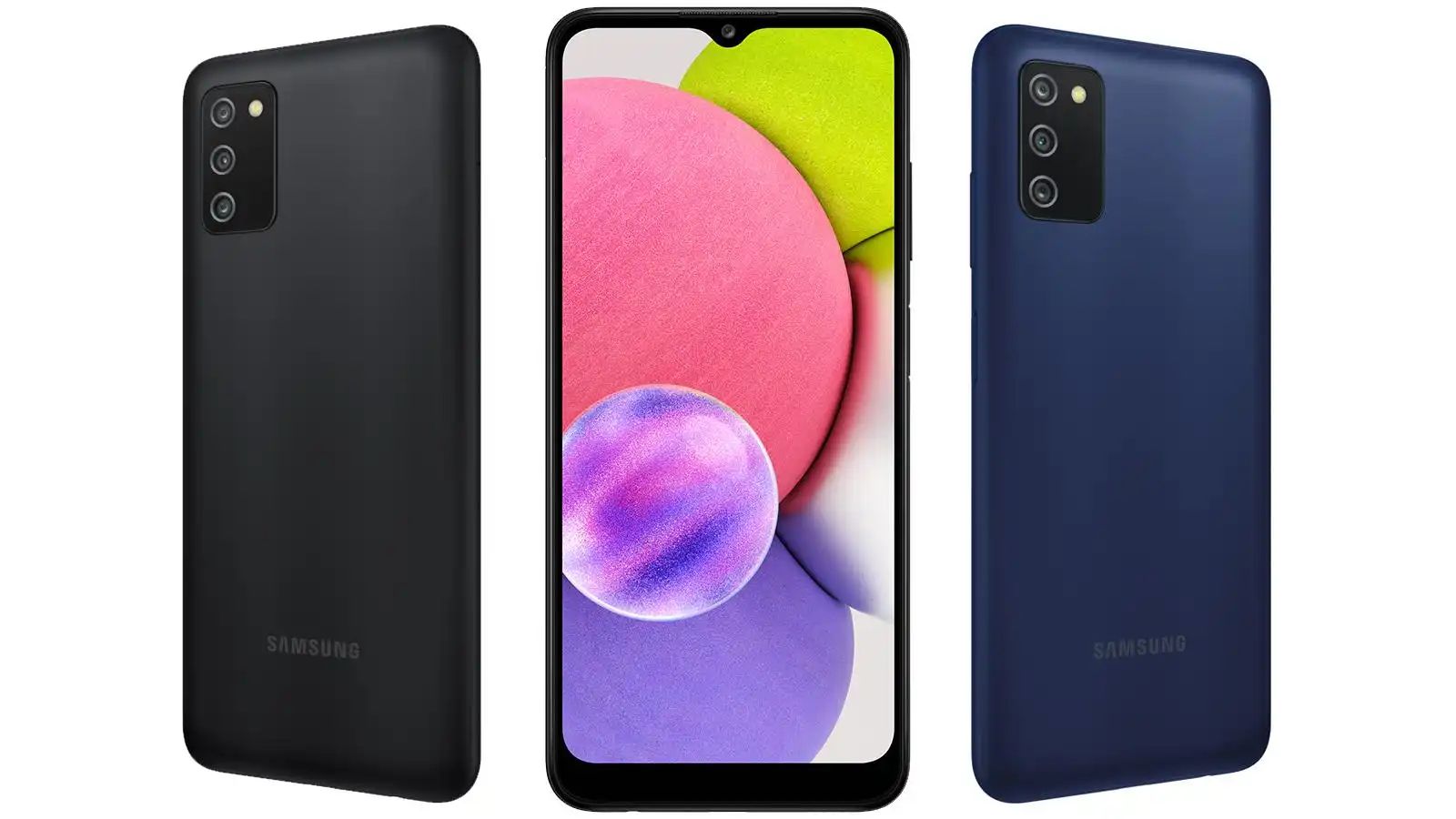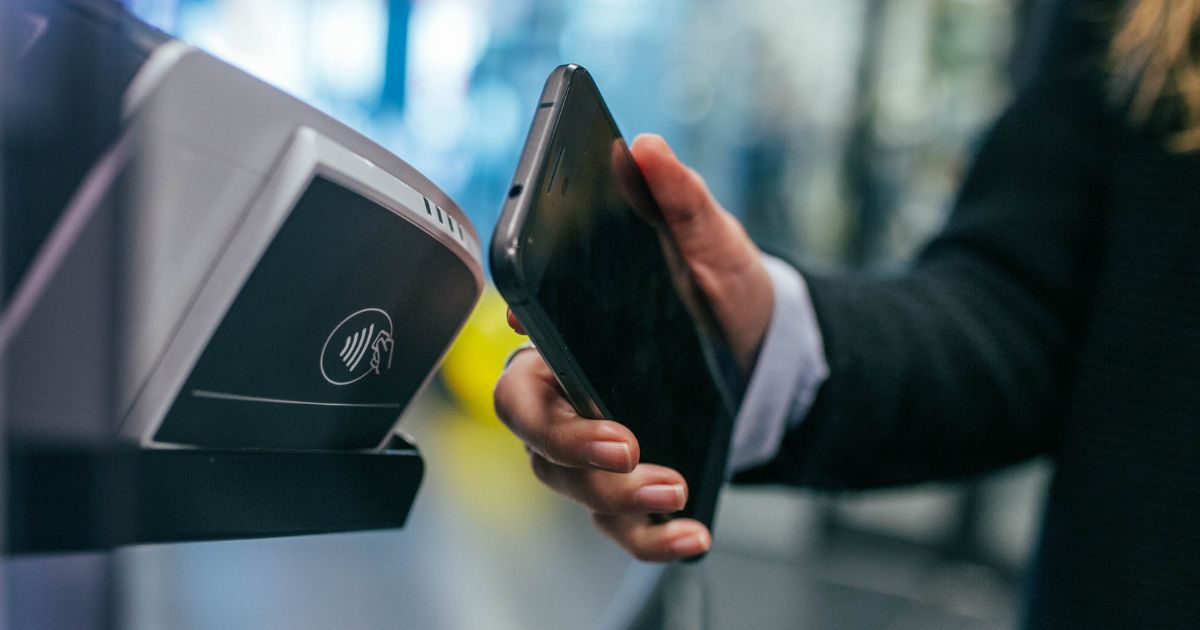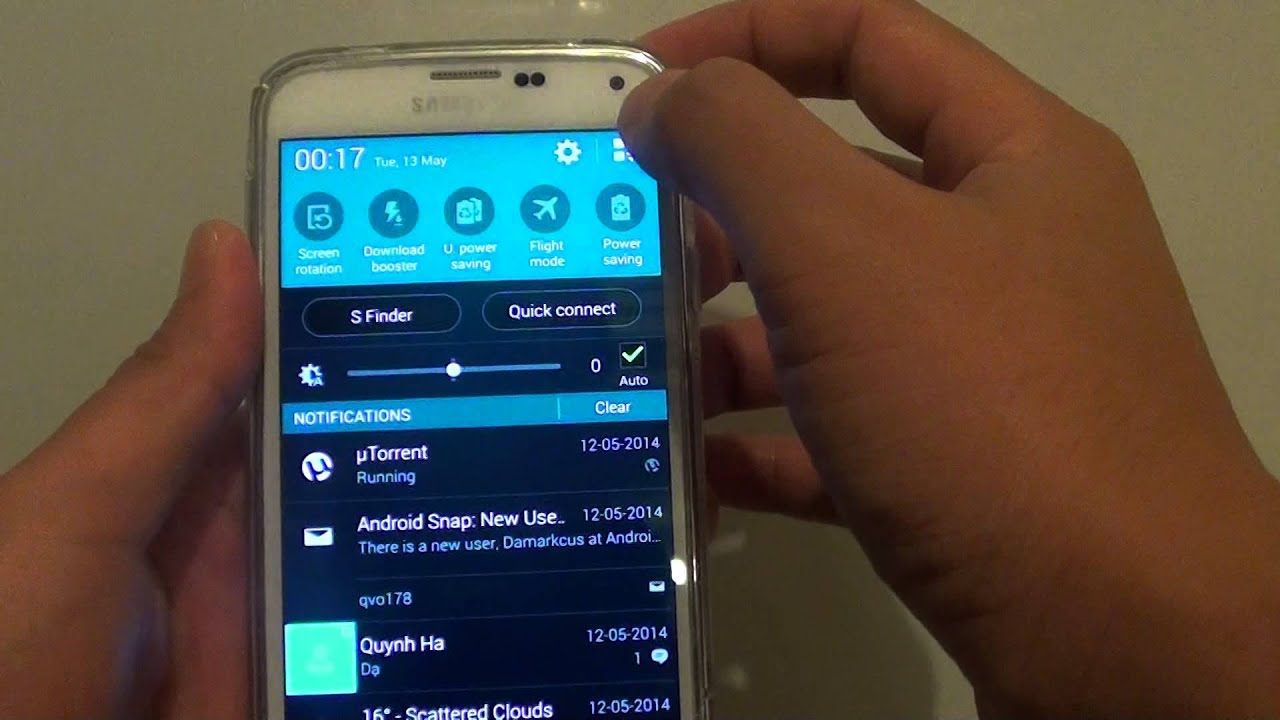Introduction
Near Field Communication (NFC) is a wireless technology that allows two devices to communicate and share data with a simple tap or proximity. It has become increasingly popular in modern smartphones, including Android devices, for its convenience and versatility. NFC offers a seamless way to transfer files, ranging from photos and videos to documents and contacts, between compatible devices without the need for cables or internet connection.
With NFC, you can transfer files in a matter of seconds by simply bringing two devices close together. This technology has revolutionized the way we share information, making file transfer quick and effortless.
In this article, we will explore the world of NFC file transfer on Android devices. We will delve into how NFC works, how to enable it on your Android device, and the steps involved in pairing and initiating a file transfer. Additionally, we will discuss troubleshooting tips for any potential issues you might encounter.
Whether you want to send vacation photos to a friend, exchange contact information, or share important documents with colleagues, NFC file transfer is a convenient solution. Let’s dive in and discover how to unleash the power of NFC on your Android device.
What is NFC?
Near Field Communication (NFC) is a short-range wireless communication technology that allows devices to establish a connection when placed within a few centimeters of each other. NFC operates on the principles of electromagnetic induction, utilizing radio waves to enable communication between devices.
NFC has gained prominence in recent years due to its widespread integration in smartphones, tablets, and other portable devices. It enables a range of applications, including mobile payments, ticketing, access control, and, of course, file transfer.
Unlike Bluetooth or Wi-Fi, which require manual pairing and more complex setup processes, NFC provides a simple and intuitive way to establish connections between devices without the need for additional configuration. With just a tap or bringing two NFC-enabled devices close together, they can instantly exchange information.
NFC operates at a frequency of 13.56 MHz and uses a technology called Radio Frequency Identification (RFID). It consists of two main components: the NFC tag and the NFC reader. The NFC tag stores data that can be read by the NFC reader. This data can include various types of information, such as contact details, URLs, or commands for executing specific actions.
One of the key benefits of NFC is its low-power consumption, making it ideal for battery-operated devices. It also ensures secure communication, as NFC supports encryption algorithms to protect data during transmission.
Overall, NFC provides a convenient and secure method for devices to exchange data. Its simplicity and range of applications have made it an essential feature in modern smartphones, enabling users to perform a wide range of tasks, including NFC file transfer.
How Does NFC File Transfer Work?
NFC file transfer relies on the NFC technology to establish a connection between two devices and facilitate the exchange of data. It uses a protocol called the NFC Data Exchange Format (NDEF) to package and transfer information between devices.
When initiating an NFC file transfer, one device acts as the sender and the other as the receiver. The sender device encodes the file or data into an NDEF message and then transmits it to the receiver device through NFC.
The NDEF message can contain various types of data, such as text, URLs, contact information, or even entire files. It essentially encapsulates the file or data to be transferred in a format that both devices can understand.
During the transfer, the NFC technology operates in Active and Passive modes. The Active device sends out a high-frequency signal that is picked up by the Passive device. The Passive device then responds with its own signal, establishing a two-way communication link.
Once the devices are connected, the sender device transmits the NDEF message to the receiver device by modulating and demodulating the radio waves. The receiver device decodes the NDEF message and retrieves the file or data contained within it.
It is worth noting that NFC file transfer requires both devices to be in close proximity and have the NFC feature enabled. A typical NFC range is only a few centimeters, ensuring that the transfer remains secure and avoids interference from other nearby devices.
In addition to the physical proximity, NFC file transfer also requires both devices to support the same file formats or data types to ensure successful communication. Not all devices may be compatible with certain file types, so it is important to confirm compatibility beforehand.
Overall, NFC file transfer simplifies the process of sharing files and data between devices. Its intuitive tap-to-transfer mechanism and wide device support make it a convenient option for quick and seamless file sharing.
Preparing Your Android Device for NFC File Transfer
Before you can start using NFC file transfer on your Android device, there are a few steps you need to take to ensure that it is properly set up and ready for use.
1. Check NFC Support: First, make sure that your Android device has NFC capabilities. Most modern smartphones and tablets support NFC, but it is always a good idea to double-check in your device’s specifications or settings menu.
2. Enable NFC: Once you have confirmed NFC support, go to your device’s Settings and look for the NFC or Connection settings. Enable NFC if it is not already turned on. This will activate the NFC hardware in your device.
3. Set NFC Preferences: While in the NFC settings, you may have additional preferences to configure. You can choose to enable or disable features such as Android Beam, which allows for easy sharing of files and data between devices.
4. Ensure Compatibility: Check the file formats and data types that your device supports for NFC file transfer. This will ensure that you can successfully exchange files with other devices without any compatibility issues.
5. Clear the Way: Ensure that your device’s NFC area is clear of any obstructions. Remove cases or covers that may interfere with the NFC signal transmission. This will ensure a strong and stable connection between devices during file transfer.
6. Keep It Charged: NFC file transfer requires power, so make sure that your device has sufficient battery life. If your device is running low on power, it may not be able to maintain a stable NFC connection or complete file transfers.
By following these steps, you can prepare your Android device for NFC file transfer and ensure a smooth and hassle-free experience when sharing files with other NFC-enabled devices.
Enabling NFC on Your Android Device
Enabling NFC on your Android device allows you to take advantage of its file transfer capabilities and experience the convenience of tap-to-share functionality. Here are the steps to enable NFC on your Android device:
1. Go to Settings: Open the Settings app on your Android device. You can usually find it in the app drawer or by swiping down from the top of the screen and tapping the gear icon.
2. Navigate to Connection Settings: In the Settings menu, locate the section related to connections or wireless settings. The exact name may vary depending on your device, but it is often labeled “Network & Internet” or similar.
3. Find NFC Settings: Within the Connection Settings menu, look for the option specifically related to NFC. It is commonly labeled as “NFC” or “NFC & Payment.”
4. Enable NFC: Once you have found the NFC settings, toggle the switch or button to enable NFC functionality on your device. It may be located at the top of the NFC settings page or within a sub-menu.
5. Configure NFC Preferences: Some Android devices allow you to customize NFC preferences. Explore the NFC settings to configure options such as Android Beam, which allows for easy sharing of files and data between devices. Enable or disable these features based on your preferences.
6. Confirm Activation: After enabling NFC, you should see a small NFC icon appear in the status bar or notification panel of your device, indicating that NFC is active. This icon may vary depending on your device’s manufacturer or Android version.
Keep in mind that the exact steps and menu names may vary slightly depending on the Android device model and version of Android you are using. If you have trouble finding the NFC settings, refer to your device’s user manual or visit the manufacturer’s website for specific instructions.
Now that you have enabled NFC on your Android device, you are ready to initiate NFC file transfers with compatible devices by simply tapping them together or bringing them in close proximity.
Checking NFC Compatibility
Before initiating NFC file transfer on your Android device, it is essential to ensure compatibility with the other device you want to share files with. Here are some steps to check NFC compatibility:
1. Verify NFC Support: Check if the other device supports NFC. Look for NFC specifications in the device’s user manual or do a quick online search. Not all devices have NFC capabilities, so it is important to confirm compatibility beforehand.
2. Check Device Compatibility List: Some devices may have a compatibility list that shows which devices they can communicate with through NFC. Check if your Android device and the other device are listed as compatible with each other.
3. Confirm NFC Enabled: Ensure that NFC is enabled on both devices. Check the settings or quick toggles on each device to verify that NFC is turned on. Both devices must have NFC activated for successful file transfer.
4. Check File Formats: Determine if both devices support the same file formats for NFC file transfer. Different devices may have limitations on the types of files they can send or receive. Confirm that the file format you want to transfer is compatible with both devices.
5. Consider Android Beam Compatibility: If you plan to use Android Beam for NFC file transfer, ensure that both devices support this feature. Android Beam allows for easy sharing of files and data between devices, but it may not be available on all Android devices.
6. Confirm Physical Proximity: NFC operates within a short-range, typically a few centimeters. Ensure that both devices are in close physical proximity for the NFC signal to establish a connection. Obstructions or interference can affect the stability of the connection.
By carefully checking NFC compatibility, you can ensure that your Android device is compatible with the other device for successful and seamless file transfer. Being aware of any limitations or requirements beforehand will help avoid frustrations or limitations during the file sharing process.
Pairing Android Devices for NFC File Transfer
To initiate an NFC file transfer between Android devices, you need to pair them first. Pairing allows the devices to establish a secure connection and enables them to exchange files and data. Here’s how you can pair your Android devices for NFC file transfer:
1. Ensure NFC is enabled: Make sure that NFC is enabled on both devices. Go to the settings menu and check the NFC settings to ensure it is turned on. The devices must both have NFC activated for successful pairing.
2. Bring devices close together: Place the two Android devices in close proximity to each other. Ensure that the NFC areas on both devices are touching or just a few centimeters apart.
3. Wait for the prompt: Once the devices are close enough, you might see a prompt or notification on one or both devices asking for permission to pair via NFC. Follow the on-screen instructions to approve the pairing request.
4. Confirm pairing: After approving the pairing, you should receive a confirmation message indicating a successful connection. The devices are now paired and ready to initiate the NFC file transfer.
5. Multiple devices: If you want to pair more than two Android devices for a group NFC file transfer, follow the same steps. Make sure each device is within close proximity and wait for the prompts on each device to approve the pairing.
Keep in mind that the specific pairing process can vary slightly depending on the Android device’s manufacturer and the version of Android you are using. Some devices may have additional security measures, such as requiring a PIN or fingerprint authentication, to complete the pairing process.
Once the devices are successfully paired, you can proceed to initiate the NFC file transfer by selecting the file or data you want to share and tapping the devices together or bringing them in close proximity.
Pairing Android devices for NFC file transfer is a quick and straightforward process that enables seamless communication between devices, allowing for easy sharing of files and data.
Initiating NFC File Transfer
After pairing your Android devices for NFC file transfer, you can initiate the actual file transfer process. Here are the steps to follow to initiate NFC file transfer:
1. Select the file or data: Choose the file or data that you want to transfer from the sender device. This can include photos, videos, documents, contact information, or any other supported file types.
2. Bring devices close together: Ensure that the NFC areas of both devices are in close physical proximity. You can tap the devices together or bring them within a few centimeters of each other.
3. Wait for the transfer: Once the devices are close enough, the sender device will initiate the NFC file transfer process. It will encode the selected file or data into an NDEF message and transmit it to the receiver device.
4. Receiver confirms transfer: The receiver device will process the received NDEF message and ask for confirmation to accept the transfer. Depending on the file type, the receiver device may prompt you to select the app or location to save the received file or data.
5. Monitor the transfer: During the transfer process, the sender device and receiver device may display progress indicators or notifications. Keep an eye on these indicators to ensure that the transfer is progressing smoothly and that any potential errors are addressed promptly.
6. Complete the transfer: Once the file or data transfer is completed, both devices will notify you of the successful transfer. You can access the received file or data on the receiver device through the appropriate app or file manager.
Note that the speed of the NFC file transfer may vary depending on factors such as the file size, NFC signal strength, and device capabilities. Smaller files usually transfer more quickly, while larger files may take longer.
Additionally, remember that NFC file transfer requires both devices to support the same file formats. If the receiver device does not have the necessary app or capability to open or view the received file, you may need to install the relevant app or convert the file into a compatible format.
By following these steps, you can initiate NFC file transfer between your paired Android devices successfully. Enjoy the convenience and speed of sharing files and data through the power of NFC!
Troubleshooting NFC File Transfer Issues
While NFC file transfer is generally a smooth and reliable process, there are instances where you may encounter issues. Here are some common troubleshooting steps to help you address NFC file transfer problems:
1. Ensure NFC is enabled: Double-check that NFC is enabled on both devices involved in the file transfer. If NFC is disabled, enable it in the device settings to establish the connection.
2. Check physical proximity: Make sure that the NFC areas of both devices are close enough to establish a connection. Remove any obstructions or cases that may interfere with the NFC signal transmission.
3. Restart the devices: Try restarting both devices. This can help refresh the NFC functionality and resolve any temporary glitches that may be affecting the file transfer process.
4. Clear the NFC cache: Clearing the NFC cache on your Android device may help resolve issues related to NFC file transfer. Go to the device settings, find the NFC settings, and look for an option to clear the cache.
5. Check for software updates: Ensure that your Android devices have the latest software updates installed. Software updates often include bug fixes and improvements that can enhance NFC functionality.
6. Verify file compatibility: Confirm that the file format you are trying to transfer is supported by both devices. If the receiving device does not support the file format, conversion or installation of the necessary app may be required.
7. Check for interference: External factors such as magnetic fields or other wireless devices may interfere with the NFC signal. Try moving to a different location or turning off nearby electronic devices that may be causing interference.
8. Reset NFC settings: If the above steps do not resolve the issue, you can try resetting the NFC settings on both devices. This will restore the default settings and may help resolve any configuration issues.
9. Test with another device: To determine if the problem lies with a specific device, try initiating NFC file transfer with a different device. If the transfer is successful, it indicates that there may be an issue with one of the devices involved.
10. Contact support: If all troubleshooting steps fail and you are still experiencing NFC file transfer issues, reach out to the device manufacturer’s support team or consult online forums for further assistance and guidance.
By following these troubleshooting steps, you can address common problems encountered during NFC file transfer and ensure a seamless and efficient sharing experience between your Android devices.
Conclusion
Near Field Communication (NFC) file transfer has revolutionized the way we share files and data between Android devices. With a simple tap or proximity, NFC allows for quick and effortless file transfer, eliminating the need for cables or an internet connection.
In this article, we explored what NFC is and how it works, understanding the technology and principles behind NFC file transfer. We discussed the steps to prepare your Android device for NFC file transfer, including enabling NFC and checking compatibility with other devices.
We also learned how to pair Android devices for NFC file transfer, establishing a secure connection between the sender and receiver devices. Initiating the file transfer itself involves selecting the file, bringing the devices close together, and confirming the transfer.
If any issues arise during the NFC file transfer process, we provided troubleshooting steps to help resolve them. From ensuring NFC is enabled to checking for physical proximity and software updates, these steps can help you overcome common obstacles.
By embracing NFC file transfer, you can experience the convenience and simplicity of sharing files and data between Android devices. Whether it’s exchanging photos, videos, documents, or contact information, NFC file transfer offers a quick and efficient solution.
Keep in mind that NFC file transfer requires both devices to have NFC capabilities and support the same file formats. Additionally, maintaining a close physical proximity and checking for any potential interference can help ensure a successful transfer.
Now that you have a deeper understanding of NFC file transfer on Android devices, you can confidently utilize this technology to streamline your file sharing process. Embrace the power of NFC and enjoy the seamless exchange of files with just a tap!







